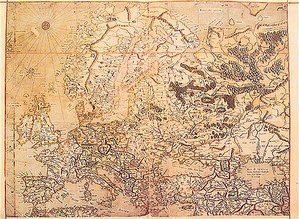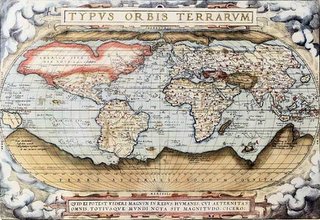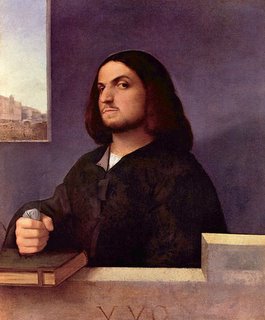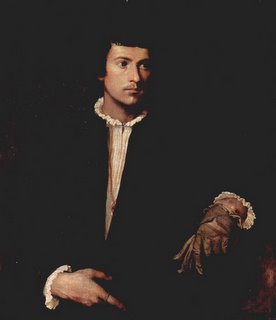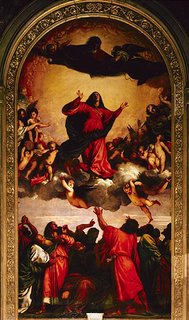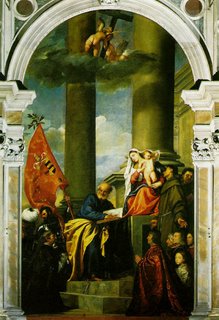In ArcGIS Desktop software architecture... we split the "Map Display" files and the "Map Data" files. Its 2 different entities. You need to get this right.
There are many important reasons for this. Please also remember ... if you change the "Map Display" files... its not going to change the "Map Data" content... the data remains the same.. only the map display changes. You can have multiple MXDs for one geodatabase, no problem.
Please also remember that LYR files are a subset of MXD files. Only if you want to export the labels / symbols reference of ONE feature class out... its recommended to use the LYR file... otherwise using MXD is suffice. This is ONE Lyr file for ONE Feature Class. You can have multiple LYR files for one feature class, no problem.
Use the term Feature Class (point, line or poly) and not Layer or Theme.
How you plan the use of "Map Display" files and "Map Data" files is very important. If not you will have a huge collection of files and folders to maintain. Please remember to slowly phase out your use of so many shapefiles... convert to geodatabase and organise them as Feature Classes/Feature Datasets.
Please read the terminologies below carefully.
MXD: In ArcMap, the file that contains one map, its layout, and ALL its associated layers, ALL tables, charts, ALL symbologies, ALL labels, coordinate system information, VBA customisation and reports. Map documents can be printed or embedded in other documents. Map document files have a .mxd extension. ALL layers can be stored in map documents (.mxd)... or if you want to save them INDIVIDUALLY as layer files (.lyr).
LYR: In ArcGIS, a reference to a data source, such as a coverage, geodatabase feature class, raster, and so on, that defines how the data should be displayed on a map INDIVIDUALLY. Layers can be stored in map documents (.mxd) or saved individually as layer files (.lyr). Layers or Feature Classes are conceptually similar to Themes in ArcView 3.x. The visual representation of a geographic dataset in any digital map environment.
STYLE: An organized collection of predefined colors, symbols, properties of symbols, and map elements. Styles promote standardization and consistency in mapping products.
PRJ: Usually its a text file named prj. The PRJ file contains the coordinate system information for the data. In a more general sense, PRJ can refer to the coordinate system of data. For example, "The PRJ of the shapefile is WGS 1984 UTM zone 15 north."
ArcView Project: In ArcView 3.x, a file for creating and storing documents for GIS work. All activity in ArcView 3 takes place within project files, which use five types of documents to organize information: views, tables, charts, layouts, and Avenue scripts. A project file organizes its documents and stores their unique settings in an ASCII format file with the extension .apr.
Geodatabase: An object-oriented data model introduced by ESRI that represents geographic features and attributes as objects and the relationships between objects but is hosted inside a relational database management system. A geodatabase can store objects, such as feature classes, feature datasets, nonspatial tables, and relationship classes. Its format on a personal geodatabase is MDB (MS Access) or enterprise is RDBMS (Oracle, SQL Server etc)
Shapefile (SHP / DBF / SHX): A vector data storage format for storing the location, shape, and attributes of geographic features. A shapefile is stored in a set of related files and contains one feature class. This is slowly gonna be phased out.
Feature class: Feature Class is a collection of geographic features with the same geometry type (such as point, line, or polygon), the same attributes, and the same spatial reference. Feature classes can stand alone within a geodatabase or be contained within shapefiles, coverages, or other feature datasets. Feature classes allow homogeneous features to be grouped into a single unit for data storage purposes. For example, highways, primary roads, and secondary roads can be grouped into a line feature class named "roads". In a geodatabase, feature classes can also store annotation and dimensions.
Feature dataset: collection of feature classes stored together that share the same spatial reference; that is, they have the same coordinate system, and their features fall within a common geographic area. Feature classes with different geometry types may be stored in a feature dataset.
